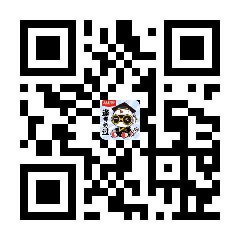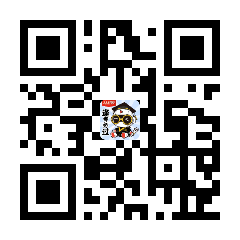手机用户可扫描以下二维码,下载233网校APP,进入教师资格考试题库页面,进行教师资格证考试模拟题、章节题、真题等练习!

2015年下半年中小学教师资格考试
英语学科知识与教学能力试题(初级中学)(精选)
注意事项:
1.考试时间120分钟,满分150分。
2.请按规定在答题卡上填涂、作答。在试卷上作答无效。不予评分。
一、单项选择题(本大题共30小题,每小题2分,共60分)
在每小题列出的四个备选项中选择一个最佳答案。请用28铅笔把答题卡上对应题目的答案字母按要求涂黑。错选、多选或未选均无分。
1.Which of the following correctly describes the English phoneme/θ/?
A.A voiceless dental fricative.
B.A voiceless alveolar fricative.
C.A voiceless dental plosive.
D.A voiceless alveolar plosive.
2.Which of the following consonant clusters may not serve as the beginning of a word?
A./spr/
B./skw/
C./str/
D./swt/
3.The gold medal was _________to Ms.Barrette for her excellent performance in the drama.
A.distributed
B.contributed
C.awarded
D.rewarded
4.The visitors had made so much_________that Mr Water had to spend several days cleaning up afterwards.
A.trouble
B.disturbance
C.damage
D.mess
5.How many morphemes does the word "telecommunication" contain?
A.1
B.2
C.3
D.4
6.In the foreign languages bookstoreto be found books in various languages.
A.is
B.is been
C.are
D.are been
7.A person needs to know who he/she is before being able to know what _________ makes him or her happy.
A.is it that
B.it is that
C.is it which
D.it is which
8.There _________ nothing more for discussion, the conference came to an end 20 minutes ear-lier.
A.be
B.to be
C.being
D.to have been
9.Which of the following is an entailment of the utterance "Annie broke the window"?
A.Annie was careless.
B.Annie was disruptive.
C.Annie did something to the window.
D.It is Annie who broke the window.
10.The following conversation clearly violates the_________.
A: How did you finally go to school?
B: The bus was so fast so I got to school very early.
A.Maxim of Quantity
B.Maxim of Relation
C.Maxim of Quality
D.Maxim of Manner
11.Which of the following statements about a lesson plan is inappropriate?
A.It is a teaching guide.
B.It is a blueprint to be strictly followed.
C.It takes into account syllabus and students.
D.It describes in advance what and how to teach.
12.Skill-integrated activities allow teachers to build in more _________ into a lesson, for the range of activities will be wider.
A.certainty
B.simplicity
C.variety
D.accuracy
13.A language proficiency test that only consists of multiple-choice questions lacks_________.
A.construct validity
B.content validity
C.test reliability
D.scorer reliability
14.when a teacher asks students to rearrange a set of sentences into a logical paragraph, he/she is trying to draw their attention to_________.
A.grammar
B.vocabulary
C.sentence patterns
D.textual coherence
15.Which of the following activities would help students develop the skill of extracting specific information?
A.Inferring meaning from the context.
B.Recognizing the author' s beliefs and attitudes.
C.Using information in the reading passage to make hypotheses.
D.Listening to the flight information to see if the plane is on time.
16.Which of the following activities can be used to check students' understanding of difficult sentences in the text?
A.Paraphrasing.
B.Blank-filling.
C.Story-telling.
D.Summarizing.
17.When a teacher organizes group work, which of the following might be of the least con-cem?
A.Increasing peer interaction.
B.Increasing individual practice.
C.Developing language accuracy.
D.Providing variety and dynamics.
18.If a teacher asks students to collect, compare and analyze certain sentence patterns, he/she aims at developing students'
A.discourse awareness
B.cultural awareness
C.strategic competence
D.linguistic competence
19.When a teacher says to the whole class,"Stand up and act out the dialogue", he/she is playing the role of a(n) _________.
A.monitor
B.organizer
C.assessor
D.prompter
20.Which of the following may better check students' ability of using a grammatical structure?
A.Having them work out the rule.
B.Having them give some examples.
C.Having them explain the meaning.
D.Having them explain the structure.
请阅读Passage l。完成第21-25小题。
Passage 1
From James Moriarty to Ernst Stavro Blofeld, the idea of the evil genius has been a staple of storytelling.But is it true? Or, to put the matter less starkly, is there a connection between creativity and dishonesty in real people who are not bent on world domination, as well as in fictional supervillains? Writing in Psychological Science, Francesca Gino of Harvard University and Scott
Wiltermuth of the University of Southem California suggest that there is--and that cheating actually increases creativity.
Dr Gino and Dr Wiltermuth tested the honesty of 153 volunteers with a task that involved adding up numbers for a cash reward, which was presented in a way that seemed to them to allow them to cheat undetected(though the researchers knew when they did).This was sandwiched between two tests for creativity, one of which was to work out how to fix a candle to a cardboard wall with a box of drawing pins, and the other a word-association test.This combination showed not only that creative people cheat more, but also that cheating seems to encourage creativity--for those who cheated in the adding-up test were even better at word association than their candle-test results predicted.
That result was confirmed by a second set of experiments, in which some people were given many opportunities to cheat and others few.The crucial predictor of creativity, the researchers con-firmed, was the actual amount of cheating, not any propensity to cheat.
A third experiment tested the idea that this is because both creativity and dishonesty require, as it were, a flexible attitude to rules.In this experiment volunteers were asked about their attitude to bossy signs, such as "no cycling" and "no diving" notices, after being allowed to cheat (again, in a way transparent to the experimenters) on a coin-tossing test.Cheats, it turned out, were less con-strained to obey such signs.
It is, it goes without saying, a long way from such acts of petty defiance to building a lair inside an extinct volcano and threatening Washington from it--or even to non-fictional acts of serious crime.But some sort of link exists, so this research does indeed suggest that Arthur Conan Doyle and Ian Fleming were on to something.
21.What can be concluded from the passage about James Moriarty and Emst Stavro Blofeld?
A.They are two evil geniuses.
B.They are two psychologists.
C.They are two story-tellers.
D.They are two researchers.
22.Which of the following is closest in meaning to the underlined phrase "were on to some-thing" in the last paragraph?
A.were inspired by something.
B.were going to do something.
C.were worried about something.
D.were aware of the nature.
23.Which of the following describes the sequence of Dr Gino and Dr Wiltermuth' s research?
A.candle test, adding-up test, word association test.
B.candle test, word association test, adding-up test.
C.adding-up test, candle test, word association test.
D.adding-up test, word association test, candle test.
24.What does the underlined words "the other" in Paragraph 2 refer to?
A.The trick.
B.The test.
C.The reward.
D.The combination.
25.What conclusion can be drawn from this passage?
A.The more a person cheats, the more creative he is.
B.Cheating is likely to encourage creativity to some extent.
C.A person who cheats is more creative than a person who doesn' t.
D.A person who is creative cheats more than a person who is less creative.
请阅读Passage 2,完成第26-30小题。
Passage 2
26--30.缺题
二、简答题(本大题1小题,20分)
根据题目要求完成下列任务。用中文作答。
31.请说明精听与泛听的区别,并分别简述教师应该如何指导学生进行精听与泛听的训练。
三、教学情境分析题(本大题1小题,30分)
根据题目要求完成下列任务。用中文作答。
32.王老师是七年级的英语老师,在一次英语课上,他首先讲解了like与dislike的区别,然后要求学生做一项配对活动,活动结束后,他宣布做练习四。整个活动过程中,王老师始终在台上,活动过程如下图。

(1)该教师在每个活动阶段分别存在什么问题?(15分)
(2)针对每个阶段中存在的问题提出相应的建议。(15分)
四、教学设计题(本大题1小题,40分)
根据提供的信息和语言素材设计教学方案。用英文作答。
33.设计任务:请阅读下面学生信息和素材,设计一个15分钟的口语教学活动,教案没有固定格式,但要包括以下几点:
· teaching objectives
· teaching contents
· key and difficult points
· major steps and time allocation
· activities and just ificatios
教学时间:l5分钟
学生概况:某城镇普通初一年级第一学期学生,40人。多数学生已经达到《义务教育英语课程标准(2011年版)》二级水平。学生课堂参与积极性一般。
语言素材:
Dear Jenny,
I am very busy on Friday.At 8 : 00 I have math.It is not fun.The teacher says it is useful, but I think it is difficult.Then at 9:00 I have science.It is difficult but interesting.At 10:00 I have his-tory.After that, I have P.E.at 11:00.It' s easy and fun.Lunch is from 12:00 to 1:00, and after that we have Chinese.It is my favorite subject.Our Chinese teacher, Mr.Wang, is great fun.My classes finish at 1 : 50, but after that I have an art lesson for two hours.It is really relaxing! How about you?
When are your classes? What is your favorite subject?
Your friend,
Yu Mei




